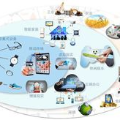Massive machine type communications (mMTC) is one of the cornerstone services that have to be supported by 5G systems. 3GPP has already introduced LTE-M and NB-IoT, often referred to as cellular IoT, in 3GPP Releases 13, 14, and 15 and submitted these technologies as part of 3GPP IMT-2020 (i.e., 5G) technology submission to ITU-R. Even though NB-IoT and LTE-M have shown to satisfy 5G mMTC requirements defined by ITU-R, it is expected that these cellular IoT solutions will not address all aspects of IoT and ongoing digitalization, including the support for direct communication between "things" with flexible deployments, different business models, as well as support for even higher node densities and enhanced coverage. In this paper, we introduce the DECT-2020 standard recently published by ETSI for mMTC communications. We evaluate its performance and compare it to the existing LPWAN solutions showing that it outperforms those in terms of supported density of nodes while still keeping delay and loss guarantees at the required level.
翻译:3GPP已经在3GPP版本13、14和15中引入LTE-M和NB-IoT,通常称为蜂窝IoT,并在3GP版本13、14和15中将这些技术作为3GPP IMT-2020(即,5GG)技术报告的一部分提交给国际电联-R。 尽管NB-IoT和LTE-M显示它满足了ITU-R界定的5G MMTC要求,但预计这些移动电话IoT解决方案将无法解决IoT和持续数字化的所有方面,包括支持“信号”与灵活部署、不同商业模式之间的直接通信,以及支持甚至更高的节点密度和扩大覆盖范围。我们在本文件中介绍了最近由ETEC-2020为MTC通信出版的标准。我们评估了该标准的执行情况,并将其与现有的LPWAN解决方案进行比较,表明它在支持节点密度方面超过了标准,同时保持延迟,并在要求的水平上保证损失。



